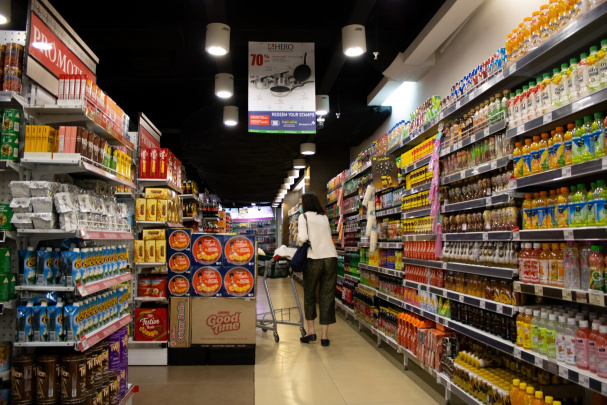Central Bank for first time publishes study results on living standards in Uzbekistan
The Central Bank studied the impact of inflation on the population groups classified by income level in regions.

Photo: KUN.UZ
Based on the results of the household expenditure and income survey (HEIS) and the Consumer Price Index (CPI) by regions, the growth of HEIS was analyzed. The differences between CPI and the cost of living were also studied based on the results obtained.
According to the results of the survey, the main part of the respondents (38.7%) in the distribution of household income belongs to the group of those with an income of 2-4 million per month.
The analysis of the difference in the cost structure of different income groups shows that low-income households spend more on food and less on non-food goods and services (i.e., transportation, health, education, etc.) than high-income groups do.
As the level of income increases, the share of food products in consumption decreases significantly. The share of food products in the consumer basket of households with incomes of 6 million soums and above is less by an average of 26% than households with incomes below 2 million soums.
The analysis of the age groups of the respondents showed that the majority of income (on average 80%) is spent by the elderly on food products, and by young people – on non-food products and services.
At the same time, the expenditures of the population aged 30-55 are higher by 18% than in the age group under 30, and by 63% than in the population over 55 years old. The relatively high share of non-food products in the consumption of the population aged 30-55 is explained by the fact that the representatives of this group are the main payers of utilities and other financial obligations.
Regional inflation figures for 2019 were calculated on the basis of CPI statistics collected by regions of the country. According to the data, the inflation rate in the regions differs significantly from the national average.
In high-income regions, such as the city of Tashkent, Tashkent and Bukhara regions (except for the Navoi region), the inflation rate is higher than the national average. The population of these regions accounts for 30% of the total population in the republic.
In areas with relatively low household incomes, particularly in the Republic of Karakalpakstan, Fergana, Namangan, and Surkhandarya regions, inflation is lower than the national average. These regions are home to 27% of the country’s population.
In most regions, low-income respondents experienced relatively high inflation rates.
Households with incomes of about 1-2 and 2-4 million soums felt a higher inflation rate of 0.6-1.4 percentage points than the ones with incomes of about 6 million soums and above.
In 2019, food inflation was 18.6%, and accordingly, relatively low-income groups experienced high inflation as a result of the fact that a large part of their expenditures was spent on foodstuffs.
At the same time, due to the high share of food products in the consumption package of low-income households, these households are more strongly affected by food inflation caused by seasonal changes.
In August 2019, the rise in prices due to the exchange rate devaluation was felt more by high-income households as they spent more money on non-food goods and services. Overall, the difference in perceived inflation rates for the highest and lowest income groups is 1.5 percentage points.
According to the analysis of research data, the largest share of household expenditures for food consumption falls on meat products – 33%, fruits and vegetables – 19.6%, bread – 12.8%, dairy products – 7% and others.
Recommended
List of streets and intersections being repaired in Tashkent published
SOCIETY | 19:12 / 16.05.2024
Uzbekistan's flag flies high on Oceania's tallest volcano
SOCIETY | 17:54 / 15.05.2024
New tariffs to be introduced in Tashkent public transport
SOCIETY | 14:55 / 05.05.2023
Onix and Tracker cars withdrawn from sale
BUSINESS | 10:20 / 05.05.2023
Latest news
-
Uzbekistan, Hungary expand dialogue on counterterrorism and public safety
POLITICS | 20:57 / 22.07.2025
-
Law tying electricity access to waste payment enforcement meets technical hurdles
SOCIETY | 19:08 / 22.07.2025
-
Uzbekistan to deepen energy sector ties with Russia’s Gazprom Neft
SOCIETY | 19:07 / 22.07.2025
-
Experts urge Uzbekistan to revise data localization rules to support innovation
SOCIETY | 17:40 / 22.07.2025
Related News

13:39 / 22.07.2025
Central Bank reports steep inflation in food and fuel, but deflation in some produce

12:46 / 18.07.2025
Foreign currency sales by citizens exceed purchases by $3.7 billion – CB

13:04 / 09.07.2025
Central Bank of Uzbekistan reports decline in reserves, while gold volume and value climb

10:32 / 09.07.2025



